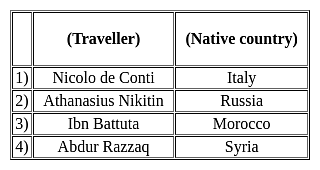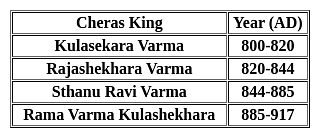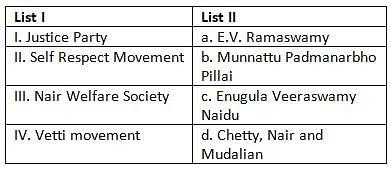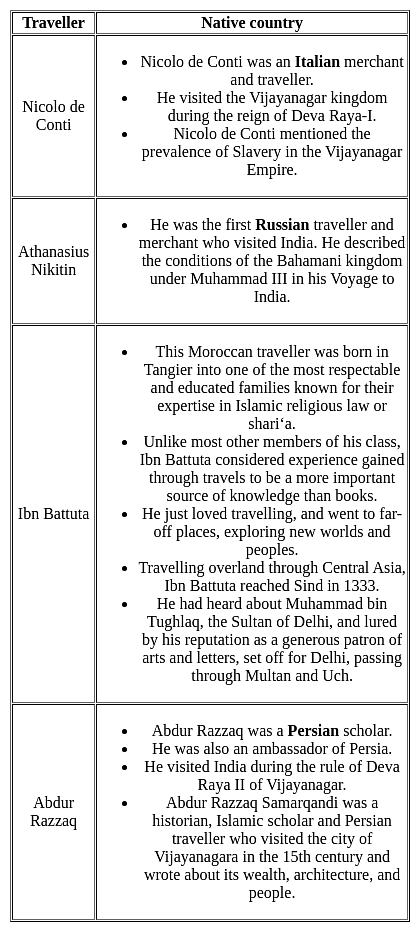TS SET Paper 2 Mock Test - 5 (History) - TS TET MCQ
30 Questions MCQ Test TS SET Mock Test Series 2024 - TS SET Paper 2 Mock Test - 5 (History)
Hindu saint Adi Shankar was a contemporary of which of the following king of Chera dynasty?
Which of the following statement is/are correct?
- The Marathas became the strongest power in southern India in the mid 18th century.
- Marathas played the role of king-makers at the Madras court.
- Marathas acted as the defenders of the country against foreign invaders like Ahmad Shah Abdali.
- Decline of the Mughal Empire was the rise of the Marathas under the Peshwa.
Select the correct code from below.
Consider the following literary works :
- Raghuvamsa
- Panchatantra
- Mudrarakshasa
Which of the works given above was/were written during the Gupta period?
At which of the following places national government was established during the Quit India movement?
(i) Tamluk
(ii) Satara
(iii) Faizpur
(iv) Baliya
Consider the following statements with respect to the Western Ganga dynasty :
1. They ruled in the northern part of Maharashtra and some parts of Madhya Pradesh.
2. The Gangas were contemporary to Kadambas.
3. Konganivarman was the first ruler of the Ganga dynasty.
Which of the statements given above are correct?
Consider the following events in the history of India:
1. Rise of Pratiharas under King Bhoja.
2. Establishment of Pallava power under Narshimhavarman I.
3. Establishment of Rashtrakutas power by Dantidurga.
4. Rise of Pala dynasty under Dharmapala.
What is the correct chronological order of the above events, starting from the earliest time?
Tirthankara Parswanath’s idol is recognized by which symbol?
“Go Back to Vedas“. Who among the following gave this motto?
Consider the following pairs:
1) Muzzafarpur Conspiracy Case:- Aurobindo Ghosh and Barinda Kumar Ghosh
2) Alipur Conspiracy Case:- Khudiram Bose and Prafulla Chaki
3) Kakori Conspiracy:- Ram Prasad Bismil, Ashfaqulla Khan
Choose the incorrect pair.
In the context of the partition of India and the princely states accession, which of the following statements about the Instrument of Accession is correct?
Who was the author of the Gwalior Prashasti of Mihira Bhoja?
Which of the following pair is not correctly matched?

Who was the author of the book ‘Manimekalai’?
Regarding Wood’s Dispatch, which of the following statements are true? (UPSC CSE 2018)
1. A Grants-in-Aid system was introduced.
2. The establishment of universities was recommended.
3. English as a medium of instruction at all levels of education was recommended.
Select the correct answer using the code given below
Consider the following statement about Hellenistic art :
1. The Sakas introduced features of Hellenistic art in the North-West frontiers of India.
2. The Hellenistic influence appears in the Pillars of Ashoka.
3. Gandhara art is the best example of Hellenistic influence.
Which of the statements given above is/are correct?The ‘Dastaks’, the misuse of which was a source of constant friction between the nawab and the East Indian Company, were actually:
Given below is the list of the rulers of the Maitraka dynasty. Arrange them in a proper sequence on the basis of founder to the last ruler.
1. Dhruvasena I
2. Dharasena I
3. Dronasimha
4. Bhatarka
With respect to the paintings in South India, consider the following statements.
I. Tanjore school of painting was developed by Chola rulers, dominated by the pictures of child Krishna.
II. The distinct school of Mysore painting evolved from the paintings of Vijayanagar times during the reign of the Vijayanagar Kings.
Choose the incorrect statements.
Below given are two statements, one is labelled as Assertion (A) and the other as Reason (R)
Assertion(A): Big buildings were the distinguishing feature of both Harappa and Mohen-jo-daro.
Reason(R): Their monuments symbolized the ability of the ruling class to mobilize labour and collect tax.
Select the correct answer using the codes given below :
King Ashvapati of the Upanishadic Age was the ruler of which among the following Kingdoms?
Who was the priest of the Bharatas in the battle of Ten Kings ?
|
60 tests
|





















